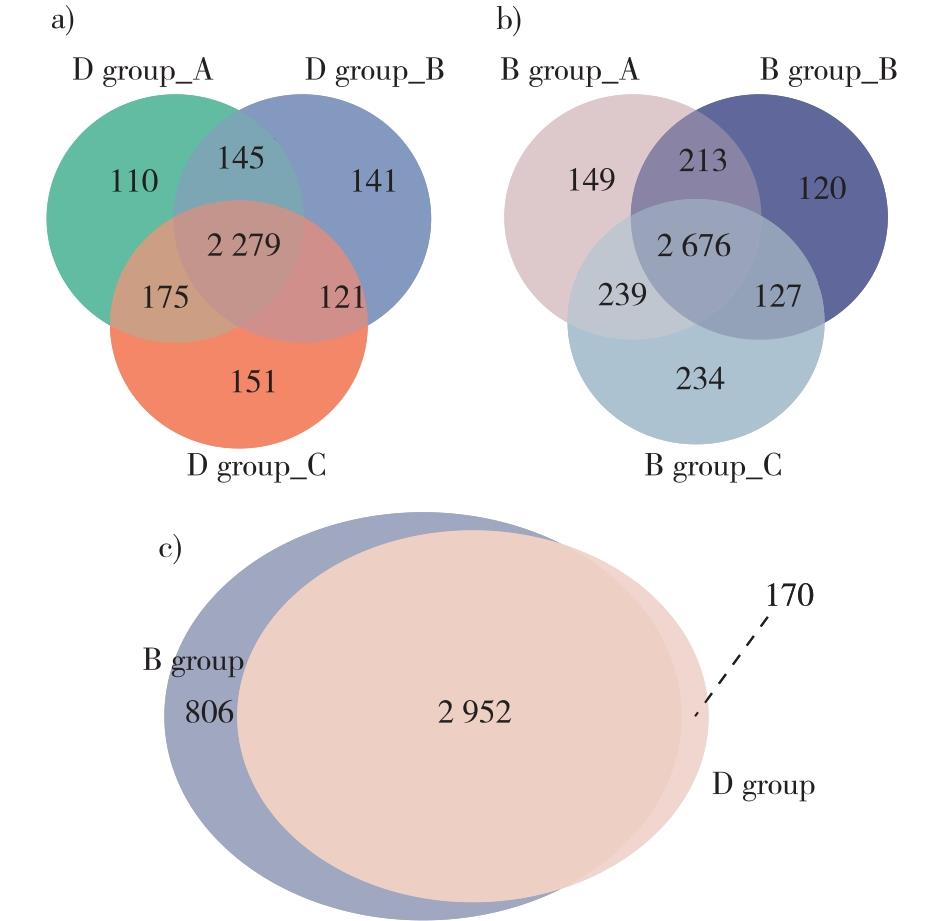【目的】探究紫荆(Cercis chinensis)种子休眠解除前后蛋白质组的变化,进一步了解紫荆种子休眠与萌发的内在机制。【方法】以成熟紫荆种子为材料,基于非标记(label-free)定量技术和液相色谱-串联质谱(LC-MS/MS)技术,分别对休眠种子和经过45 d低温层积后解除休眠的种子进行蛋白质组定量和定性分析,利用生物信息学分析紫荆种子休眠解除前后差异蛋白质的功能。【结果】筛选获得1 031个差异表达蛋白,其中显著上调的779个,显著下调的252个。差异表达蛋白被GO功能注释到生物进程、细胞组分和分子功能3大类49个亚类,注释的差异蛋白与代谢过程、酶催化活性、细胞组分合成、应激反应等密切相关。KEGG代谢通路注释结果表明,共有1 012个差异蛋白被注释,涉及264条通路,差异蛋白主要集中在碳代谢、多糖分解、蛋白质过程等,显著富集在7条通路,主要参与激素合成、次生代谢产物合成、脂质代谢等。差异倍数较高的蛋白质中,可能与紫荆种子休眠解除相关的有β-葡萄糖苷酶活性相关蛋白、泛醌和其他萜醌生物等次生代谢相关蛋白、乙醛酸循环相关蛋白等。【结论】紫荆种子休眠解除是较为复杂的生物学过程,涉及细胞形态变化、酶的催化、多糖分解及激素信号转导等,多条代谢途径相互作用构成了较为复杂的休眠解除调控机制。
【Objective】This study investigated proteom-level changes between dormant and broken dormancy seeds of Cercis chinensis to get a better understanding of the intrinsic mechanisms underlying seed dormancy and germination.【Method】The mature seeds were soaked in hot water until they reached a constant weight, and then subjected to stratification treatment mixed with moisture sand in a 4 ℃ environment until dormancy was released and germination occurred. Label-free quantitative proteomics and liquid chromatography-tandem mass spectrometry (LC-MS/MS) were used to perform proteome quantitative and qualitative analysis on dormant and dormancy-broken seeds after 45 days of cold stratification were performed based on, respectively. Bioinformatics analysis was also conducted to explore the expression and function mechanism of differentially expressed proteins (DEPs) between dormant and dormancy-broken seeds, and to discuss the proteins and its mechanisms related to the dormancy release.【Result】A total of 3 928 proteins were identified in this study, with 3 122 proteins were detected in dormant samples and 3 758 proteins were detected in dormancy-broken samples. After screening the proteins based on the standard of fold changes greater than 2.0 and P<0.05, we filtered 1 031 DEPs. Among these, 779 proteins were up-regulated and 252 proteins were down-regulated. The DEPs were annotated using GO annotation into three categories and 49 subcategories of biological processes, cellular components and molecular functions. The annotated DEPs were closely related to metabolic processes, enzyme catalytic activity, synthesis of cellular components, and stress response. In addition, the KEGG metabolic pathway annotation results showed that 1 012 DEPs were annotated, involving 264 pathways. The DEGs were mainly associated with carbon metabolism, polysaccharide decomposition, and protein processing. The significant enrichment results revealed seven pathways, mainly involving the hormone synthesis, secondary metabolite synthesis, and lipid metabolism. The highly abundant DEPs that may be linked to dormancy breaking are proteins related to β-glucosidase activity, ubiquinone, terpene quinone organisms related proteins, and glyoxylic acid cycle-related proteins. 【Conclusion】This study demonstrates that the dormancy release of C. chinensis seeds is a complex biological process that involves cell morphological changes, enzyme catalysis, polysaccharide decomposition and hormone signal transduction. The release of dormancy is regulated by the interaction of multiple metabolic pathways. Further research is needed to study the molecular mechanism of dormancy release using molecular biological methods such as transcriptomics and metabonomics.
 PDF(2123 KB)
PDF(2123 KB)


 PDF(2123 KB)
PDF(2123 KB)
 PDF(2123 KB)
PDF(2123 KB)
